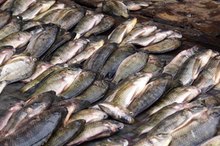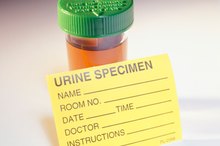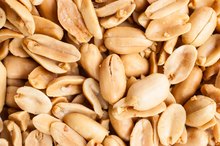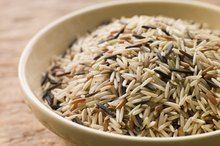Anusitis occurs when the skin around the anal opening becomes irritated. You may experience uncomfortable symptoms such as itching, burning and pain. Acidic foods in your diet are the primary cause of this condition, so dietary intervention can help reduce your symptoms. An anusitis diet is essentially an elimination diet, requiring you to avoid acidic foods temporarily and then add them back as tolerated.
If you are experiencing serious medical symptoms, seek emergency treatment immediately.
Acidic Beverages
A wide variety of beverages are acidic and can exacerbate anal irritation in sensitive individuals. Make a grocery list of safe foods and beverages to make it easier when you go shopping 2. Acidic beverages to avoid include:
- citrus juices
- coffee
- black tea
- beer
- red wine
- soda
- other carbonated drinks
Add white wine, herbal tea, fresh vegetable juice and milk to your allowed beverages list.
Acidic Fruits and Vegetables
Foods to Avoid With Esophagitis
Learn More
Remove acidic fruits from your diet. Some fruits, such as mangoes, are slightly acidic, so assess your tolerance. Bananas are safe for you to consume. Most vegetables are OK to eat since they're low in acid. Eggplant and pickles, however, are very acidic and may cause problems. Carrots, cauliflower, artichoke, turnips and shallots are slightly acidic.
- Remove acidic fruits from your diet.
- Eggplant and pickles, however, are very acidic and may cause problems.
Other Acidic Foods
Aged buttermilk, yogurt sweetened with fruit, hard cheeses and soft cheeses are highly acidic and need to be avoided.
Following an Anusitis Diet
Foods to Avoid for Cystitis
Learn More
Try following a strict elimination diet for three weeks to see if your symptoms improve. Consult your health care provider for a complete list of safe foods and foods to avoid. Keep a diet diary to keep track of your meals and symptom severity. After three weeks, reintroduce the foods you eliminated one by one every two to three days. Reintroducing foods slowly helps identify the offending food or foods.
- Try following a strict elimination diet for three weeks to see if your symptoms improve.
- Keep a diet diary to keep track of your meals and symptom severity.
Related Articles
References
- Digestive Health Clinic: Anusitis
- pH and Water
- pH | CADDIS Volume 2 | US EPA
- Drinking Water Regulations and Contaminants | Safe Drinking Water Act (SDWA) | US EPA
- pH | CADDIS Volume 2 | US EPA
- pH | CADDIS Volume 2 | US EPA
- pH | CADDIS Volume 2 | US EPA
- pH and Water
- pH and Water
- An assessment of pH-dependent release and mobility of heavy metals from metallurgical slag - ScienceDirect
- pH and Water
- Toxicity, mechanism and health effects of some heavy metals
- Heavy Metal Mixture Exposure and Effects in Developing Nations: An Update
- Heavy Metals and Human Health: Mechanistic Insight into Toxicity and Counter Defense System of Antioxidants
- Heavy Metal Mixture Exposure and Effects in Developing Nations: An Update
- Exposure routes and health effects of heavy metals on children - PubMed
- Association of blood heavy metals with developmental delays and health status in children
- Testing the Effect of Aggressive Beverage on the Damage of Enamel Structure
- Testing the Effect of Aggressive Beverage on the Damage of Enamel Structure
- The pH of beverages available to the American consumer
- Causal assessment of dietary acid load and bone disease: a systematic review & meta-analysis applying Hill's epidemiologic criteria for causality
- Exposure to heavy metals and the risk of osteopenia or osteoporosis: a systematic review and meta-analysis - PubMed
- A Review of Metal Exposure and Its Effects on Bone Health
- All about corrosivity
- All about corrosivity
- Biological Properties of Acidic Cosmetic Water from Seawater
- Acidic Water Bathing Could Be a Safe and Effective Therapeutic Modality for Severe and Refractory Atopic Dermatitis
- The role of Staphylococcus aureus in atopic dermatitis: microbiological and immunological implications
- Acidic Water Bathing Could Be a Safe and Effective Therapeutic Modality for Severe and Refractory Atopic Dermatitis
- The role of Staphylococcus aureus in atopic dermatitis: microbiological and immunological implications
- Application of Topical Acids Improves Atopic Dermatitis in Murine Model by Enhancement of Skin Barrier Functions Regardless of the Origin of Acids
- Acidic Water Bathing Could Be a Safe and Effective Therapeutic Modality for Severe and Refractory Atopic Dermatitis
- Evaluation of pH of Bathing Soaps and Shampoos for Skin and Hair Care
- pH in nature, humans and skin - PubMed
- pH in nature, humans and skin - PubMed
- Impact of a pH 5 Oil-in-Water Emulsion on Skin Surface pH
- Comparison of Healthy and Dandruff Scalp Microbiome Reveals the Role of Commensals in Scalp Health
- The Shampoo pH can Affect the Hair: Myth or Reality?
- Effectiveness of slightly acidic electrolyzed water on bacteria reduction: in vitro and spray evaluation
- Red cabbage washing with acidic electrolysed water: effects on microbial quality and physicochemical properties | Food Quality and Safety | Oxford Academic
- Fumaric Acid and Slightly Acidic Electrolyzed Water Inactivate Gram Positive and Gram Negative Foodborne Pathogens - PubMed
- Effect of acidic electrolyzed water on the viability of bacterial and fungal plant pathogens and on bacterial spot disease of tomato - PubMed
- Effect of Soil pH on the Growth, Reproductive Investment and Pollen Allergenicity of Ambrosia artemisiifolia L.
- Effects of Low pH on Photosynthesis, Related Physiological Parameters, and Nutrient Profiles of Citrus
Writer Bio
Janet Renee is a clinical dietitian with a special interest in weight management, sports dietetics, medical nutrition therapy and diet trends. She earned her Master of Science in nutrition from the University of Chicago and has contributed to health and wellness magazines, including Prevention, Self, Shape and Cooking Light.









